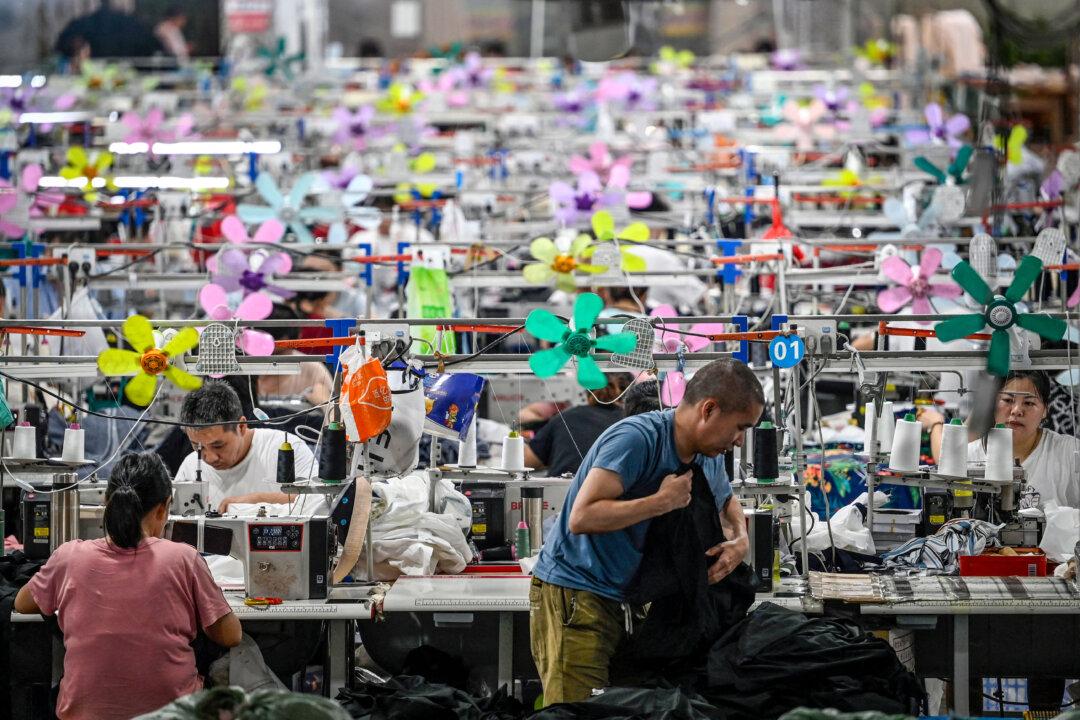A full-scale lockdown on China’s financial hub of Shanghai is likely to cost the economy 190 billion yuan ($29.8 billion) in two weeks, or 2 percent of gross domestic product (GDP), according to a minimum estimate by a Hong Kong economist.
Almost 7 percent of the loss would be from the spillover effects to other cities, said Zheng Michael Song, an economics professor at the Chinese University of Hong Kong.
Song, along with four other economic researchers from the United States, Hong Kong, and mainland China, used city-to-city truck flow data from the real-time location of 1.8 million trucks to measure the economic impact of China’s lockdowns.
Half of Shanghai began a four-day locking down on March 28, and the restrictions will move to the other half for four days starting Friday.
The sweeping, two-staged measures were to allow health workers to complete at least two rounds of mass screening of the city’s 26 million residents in a bid to contain surging infections under the regime’s zero-tolerance COVID-19 strategy.
The restrictions barred unapproved vehicles from streets, closed public transportation, and required millions of residents to stay at home.
Chipmaker Semiconductor Manufacturing International Corporation said their factories in Shanghai remained open to produce as usual, state media outlets reported on March 28. Tesla, meanwhile, reportedly suspended productions for four days on Monday, according to Reuters, citing people familiar with the matter.

Minimum Estimate
The staggered lockdown in Shanghai marked a U-turn for the city’s authorities. The city had previously been held up as a model for tamping down outbreaks through a more targeted approach, without resorting to a full-blown lockdown.The city had sealed off many residential communities in the past week and screened citizens neighborhood by neighborhood. Officials had also said the city couldn’t enter a full lockdown, citing the impact on the national and global economy.
These estimates “only capture the effects of lockdown in the short run,” the experts said in the report.
Shenzhen relaxed the citywide restrictions on March 21, allowing businesses to resume operations after a week lockdown.
A survey conducted by a state-run newspaper found Shenzhen’s “war” on COVID-19 has hurt up to 93 percent of local small and medium-sized companies, with many experiencing disruptions to production, interruptions to supply chains, and delays in orders as a result of the shutdown.

Disruption to Global Supply Chains
As millions of residents in Shanghai are confined to their homes, consumers in the rest of the world are also likely to feel the pressure as global supply chains are expected to be further disrupted due to the lockdown.City officials assured major ports and airports that normal operations could be maintained during the lockdown. However, researchers and logistics providers warned that delays are expected in cargo transportation and trucking services.
State-backed media Global Times, quoted a researcher from the Shanghai International Shipping Institute who said that while the port in the city remained open, efficiency has declined due to labor constraints and quarantine requirements.
Shipments scheduled to leave for Japan and Thailand on March 29 were delayed to next week, the report said, citing an unamed employee from a logistics company.
The disruptions particularly come from “neighboring provinces with trucks being forced to turn back on their way to Shanghai port, leaving a large part of the cargo ready for loading today unable to be transported to the port,” it stated.
Danish shipping giant Maersk also warned of affected trucking service in Shanghai and potential higher transportation costs due to the city’s lockdown.
Maersk’s warehouses in Shanghai would be closed until April 1.
“Consequently, there will be longer delivery time and a possible rise in transport costs such as detour fee and highway fee.”
SEKO Logistics, a U.S.-based freight transport and warehousing company, said factories in the neighboring province of Zhejiang were opting to move cargo out of the port in Ningbo, to Shanghai’s south, rather than Shanghai.
“We are anticipating: a sharp increase in air freight rates from today,” the company said on its website.




